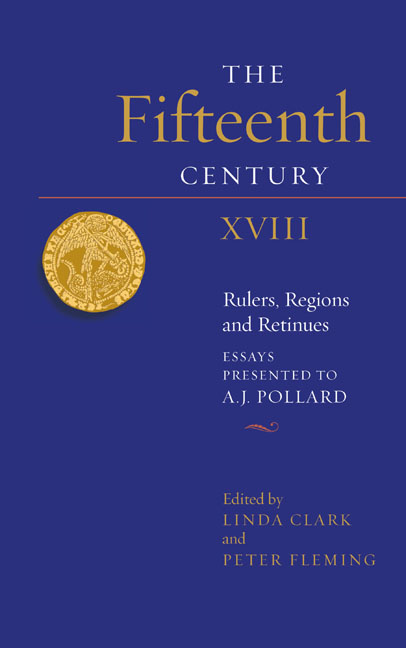Tyranny and Affinity: The Public and Private Authority of Richard II and Richard III
Published online by Cambridge University Press: 24 November 2020
Summary
‘Britain mourns a monster – because he was a king’. These were the opening words of Polly Toynbee's reflection on Richard III's interment in Leicester cathedral on 26 March 2015. How could it be, she asked, that thousands – 20,000, by all accounts – came to Leicester to humble themselves before the bones of this ‘child-murdering tyrant’? It is a question which need not detain us here, except to suggest that perhaps the media frenzy and popular interest surrounding the discovery of Richard's remains in 2012, and his reburial three years later, was in part the product of a perfect combination of royal intrigue, historical notoriety and murder most foul. So who did kill the Princes in the Tower? On the basis of probability the Princes were killed on the orders of Richard III, but in the absence of definitive proof scholars have sensibly tended to focus on the point that Richard III was believed to have had his nephews killed.
For contemporaries, however, it was not necessarily Richard's infanticide which informed their view that the king was a tyrant. Just over forty years ago Tony Pollard wrote an article entitled ‘The Tyranny of Richard III’, in which he focused exclusively on Richard's use of his affinity to understand why the king sat on the throne for barely two years. It was how the king governed the shires, rather than what happened in the Tower, which did most to turn late fifteenth-century public opinion against him. Pollard showed how Richard's ‘plantation’ policy violated the accepted norms of late medieval kingship and ultimately led to his downfall in 1485. Subsequent work on the reign of Richard III owed much to Pollard's characteristically incisive and erudite contribution to the subject. But the question of the king's (mis)management of local government, his relationship with particular regions and the use (or misuse) of his royal affinity finds resonance in other reigns and is of particular relevance in understanding the phenomenon of ‘failed kingship’. In what follows I draw out the broader context of Richard III's retaining policy before moving on to consider in detail the circumstances of Richard II's retaining policy, for it is Richard II who is generally considered to have ‘invented’ the phenomenon of the extended royal affinity.
- Type
- Chapter
- Information
- The Fifteenth Century XVIIIRulers, Regions and Retinues. Essays presented to A.J. Pollard, pp. 1 - 16Publisher: Boydell & BrewerPrint publication year: 2020



